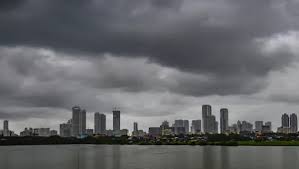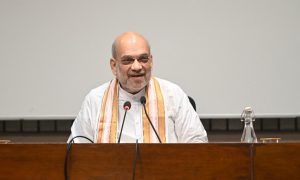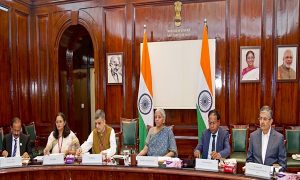Cyclonic storm Nisarga is likely to turn into a ‘severe cyclonic storm’ in the next 24 hours and hit coastal Maharashtra and Gujarat in the evening hours of June 3.
According to the IMD, cyclone Nisarga is likely to make landfall near Mumbai tomorrow. “The landfall location will be very close to Alibag but extensive damage can be expected in Mumbai also,” said Sunita Devi, in-charge of cyclones at the India Meteorological Department (IMD).
“It is very likely to intensify into a cyclonic storm during the next 12 hours and further into a severe cyclonic storm during the subsequent 12 hours. It is very likely to move nearly northwards during next 6 hours and recurve north-northeastwards thereafter and cross north Maharashtra and adjoining south Gujarat coast between Harihareshwar (Raigad, Maharashtra) and Daman during the afternoon of 3rd June,” the weather department added.
More than 20 teams have been deployed in Maharashtra and Gujarat, NDRF Director General SN Pradhan said. Prime Minister Narendra Modi on Tuesday took stock of the situation in the wake of cyclone conditions.
“Praying for everyone’s well-being. I urge people to take all possible precautions and safety measures,” PM Modi tweeted.
As cyclone Nisarga rattles its way to landfall tomorrow, here’s how it was named.
How was Nisarga namedThe World Meteorological Organisation maintains rotating lists of names which are appropriate for each Tropical Cyclone basin. The group included 13 member countries and names cyclones in the region. Bangladesh, India, Iran, Maldives, Myanmar, Oman, Pakistan, Qatar, Saudi Arabia, Sri Lanka, Thailand, the United Arab Emirates and Yemen are part of the 13-nation group.
The World Meteorological Organisation/United Nations Economic and Social Commission for Asia and the Pacific (WMO/ESCAP) panel on Tropical Cyclones at its twenty-seventh session held in 2000 in Muscat, Sultanate of Oman, agreed in to assign names to the tropical cyclones in the Bay of Bengal and the Arabian Sea.
The naming of the tropical cyclones over the north Indian Ocean commenced from September 2004, with names provided by eight members. Since then, five more countries joined the panel.
Nisarga was the first list name in the current list of cyclones. Cyclone Amphan was the last name in the previous list and was supposed to take up for the first cyclonic storm to occur in the region this year. Amphan was suggested by Thailand in the year 2004 while Nisarga was a suggestion that came from Bangladesh.
The last cyclone in the region before Amphan, Fani, was also named by Bangladesh.
After Nisarga, the names to be used will be taken from the new list, starting with Gati (named by India), Nivar (Iran), and so forth. Previously, cyclone Hudhud was named by Oman while cyclone Titli was Pakistan’s suggestion.


























 WhatsApp us
WhatsApp us